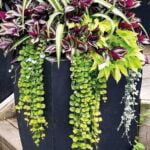Are you looking for ideas for landscape design to enhance the beauty of your outdoor space? Whether you have a large backyard or a small garden, creating a visually pleasing landscape can greatly improve the overall look and feel of your property. In this article, we will explore various concepts and principles of landscaping, including incorporating different elements, choosing the right plants, sustainable landscaping, DIY projects, and maintenance tips.
The art of landscape design goes beyond simply planting a few flowers or installing a hardscape feature. It involves understanding the principles of design and using different elements to create an outdoor space that is not only aesthetically pleasing but also functional. By incorporating plants, hardscaping, water features, and other elements, you can transform your landscape into a beautiful and inviting environment for relaxation and enjoyment.
One of the key aspects of creating a beautiful landscape is selecting the right plants for your outdoor space. Whether you prefer vibrant blooms or lush greenery, choosing the perfect foliage can greatly enhance the overall look of your landscape.
Additionally, if you have limited space to work with, there are innovative design concepts that can help you maximize the potential of your small landscape. Furthermore, if you’re interested in taking an eco-friendly approach to landscaping, there are sustainable techniques that can help minimize environmental impact while still creating a stunning outdoor environment.
Understanding the Principles of Landscape Design
Landscape design is both an art and a science, combining creativity with the principles of design to create visually pleasing outdoor spaces. Understanding the basic principles of landscape design can help you transform your backyard or garden into a beautiful and functional space that reflects your personal style.
Whether you’re working with a small urban yard or a sprawling rural property, these principles can help guide you in creating a landscape that is both aesthetically pleasing and well-suited to your needs.
Balance and Symmetry
One of the fundamental principles of landscape design is achieving balance and symmetry in the outdoor space. This involves arranging elements such as plants, hardscaping, and water features in a way that creates visual equilibrium. For example, if you have a large, imposing tree on one side of your yard, you may want to balance it with a smaller grouping of shrubs or planters on the opposite side.
Unity
Creating unity in your landscape involves making sure that all the elements work together harmoniously. This can be achieved through repetition of certain colors, shapes, or materials throughout the space. It’s also important to consider how different areas of the landscape flow together to form a cohesive whole.
Proportion and Scale
Properly proportioned and scaled elements are essential for creating an attractive landscape. This means choosing plants and other features that are well-suited to the size of your outdoor space. For example, planting large trees next to a small patio may create an unbalanced look, while planting smaller shrubs or flowers would be more proportionate. Consider how each element fits within the overall scale of your landscape to ensure an aesthetically pleasing result.
By understanding these principles of landscape design, you can create an outdoor space that is not only visually appealing but also well-suited to your needs and lifestyle. Whether you’re starting from scratch with a brand-new landscape or looking to update an existing one, keeping these principles in mind can help guide you toward creating a beautiful and functional outdoor environment that you’ll enjoy for years to come.
Incorporating Different Elements
Landscaping is a blend of both art and science. When it comes to crafting a visually stunning landscape, it’s crucial to understand how to integrate various elements such as plants, hardscaping, and water features in order to create a cohesive outdoor space. One of the key aspects of landscape design is achieving balance – using the right combination of these elements to enhance the natural beauty of the area.
When it comes to incorporating plants into your landscape, consider factors such as color, texture, and size. Mixing different types of foliage can add depth and visual interest to your outdoor space. Additionally, paying attention to seasonal changes in your area can help you select plants that will thrive year-round.
Hardscaping refers to non-living elements such as walkways, patios, retaining walls, and other structures that are included in a landscape design. These features provide structure and functionality while also adding an aesthetic appeal. A well-designed hardscape not only complements the plantings but also improves usability and accessibility within the outdoor space.
Water features such as fountains, ponds, or streams can act as a focal point in your landscape design. They not only offer auditory benefits by creating soothing sounds but also come with visual appeal. Water features can attract wildlife like birds and frogs which contributes even further to the overall ambiance of your outdoor space. An expertly integrated water feature has transformative potential in any landscape design setting.
| Landscape Element | Importance |
|---|---|
| Plants | Adds color and texture; impacts year-round appeal |
| Hardscaping | Provides structure; adds functionality; contributes aesthetic appeal |
| Water Features | Creates focal points; provides soothing sounds; supports wildlife habitation |
Choosing the Right Plants for Your Landscape
When it comes to landscaping, choosing the right plants is crucial in creating a visually appealing outdoor space. Whether you’re aiming for a lush, tropical paradise or a minimalist, modern garden, selecting the perfect foliage can make all the difference. Here are some tips to help you choose the right plants for your landscape:
1. Consider your climate: Before selecting any plants for your landscape, it’s important to consider the climate of your region. Choose plants that are well-suited to the temperature and weather patterns in your area to ensure they thrive in their new environment.
2. Think about maintenance: Some plants require more care and attention than others. If you have a busy schedule or are new to gardening, opt for low-maintenance plants that don’t require frequent watering or pruning.
3. Create a color scheme: To achieve a cohesive and harmonious look in your landscape, consider creating a color scheme for your plant selection. You can choose complementary colors for a vibrant and eye-catching garden, or go for a monochromatic palette for a more serene and understated feel.
4. Plan for variety: Incorporating different types of plants – such as trees, shrubs, flowers, and grasses – will add depth and visual interest to your landscape. Be sure to vary the heights, textures, and shapes of the plants to create dynamic and engaging outdoor spaces.
By keeping these tips in mind when selecting plants for your landscape, you’ll be well on your way to creating an outdoor space that is not only visually stunning but also well-suited to thrive in its environment.
Creative Ideas for Small Landscapes
When it comes to landscaping, having a small outdoor space doesn’t mean you have to sacrifice beauty and creativity. In fact, with the right design concepts, you can make the most out of limited space and create a stunning outdoor environment. Here are some creative ideas for small landscapes that will help you maximize your outdoor space:
- Vertical gardening: Utilize wall space by incorporating vertical gardens using hanging planters or trellises. This not only adds greenery to your landscape but also creates visual interest and maximizes space.
- Multipurpose furniture: Opt for furniture that serves multiple functions, such as benches with built-in storage or tables with foldable sides. This allows you to have functional outdoor seating and dining areas without taking up too much space.
- Utilize containers: Container gardening is an excellent way to add plants and flowers to a small landscape. Use different sized containers strategically placed throughout the space to create depth and variety.
In addition to these ideas for landscape, consider incorporating elements that visually expand the space, such as using mirrors strategically placed to reflect light and create an illusion of a larger area. Avoid cluttering the landscape with too many different elements, instead focus on creating a cohesive design that makes the most out of every inch of your outdoor space.
By implementing these innovative design concepts, you can transform your small landscape into a beautiful and functional outdoor oasis that you’ll love spending time in. With careful planning and creativity, limited space should never limit your landscaping potential.
Sustainable Landscaping
When it comes to creating a beautiful outdoor space, sustainable landscaping offers a responsible and environmentally friendly approach. This concept focuses on reducing water usage, minimizing chemical usage, and creating a balanced ecosystem within the landscape. By implementing sustainable landscaping practices, individuals can enjoy a visually stunning environment while also contributing to the preservation of nature.
One of the key principles of sustainable landscaping is water conservation. This can be achieved through the use of drought-resistant plants, rainwater harvesting systems, and efficient irrigation techniques. Additionally, utilizing permeable hardscaping materials such as gravel or porous pavement can help reduce water runoff and erosion.
Another aspect of sustainable landscaping is promoting biodiversity. Incorporating native plants into the landscape design can attract pollinators and beneficial insects, thereby creating a healthy and thriving ecosystem. Avoiding the use of pesticides and opting for natural pest control methods will further contribute to the overall well-being of the environment.
Furthermore, sustainable landscaping emphasizes the importance of soil health. Employing organic mulching materials and practicing composting can enrich the soil, improve its fertility, and reduce the need for chemical fertilizers. These practices not only benefit plant growth but also support a healthier living environment for various organisms within the landscape.
| Sustainable Landscaping Practices | Benefits |
|---|---|
| Water conservation | Reduces water usage and erosion |
| Promoting biodiversity | Attracts beneficial insects and creates a healthy ecosystem |
| Soil health | Enriches soil fertility and reduces dependence on chemical fertilizers. |
DIY Landscaping Projects
When it comes to landscaping, many homeowners may feel overwhelmed by the cost of hiring professionals to transform their outdoor space. However, DIY landscaping projects can be a budget-friendly alternative that allows you to take control of your landscape design. In this section, we will explore some creative and affordable ideas for transforming your landscape on your own.
Creating a Budget
Before diving into any DIY landscaping project, it’s important to establish a budget. Determine how much you are willing to spend on materials, tools, and plants. By setting a budget, you can prioritize which projects are most important and allocate funds accordingly. Additionally, consider researching the cost of materials and comparing prices at different stores to find the best deals.
Repurposing Materials
One great way to save money on DIY landscaping projects is by repurposing materials. For example, old pallets can be transformed into vertical gardens or used as rustic fencing. Similarly, broken concrete pieces can be turned into stepping stones or used to create edging for flower beds. By thinking creatively and finding new uses for old items, you can save money while adding unique features to your landscape.
Low-Maintenance Planting
When selecting plants for your DIY landscaping project, opt for low-maintenance options that require minimal care and watering. Drought-tolerant plants like lavender, yucca, and sedum are not only easy to maintain but also help conserve water – saving you time and money in the long run. Additionally, consider looking for native plants that thrive in your specific climate and soil conditions without needing extensive care.
By incorporating these budget-friendly ideas into your DIY landscaping projects, you can transform your outdoor space without breaking the bank. Whether it’s repurposing old materials or choosing low-maintenance plants, there are plenty of ways to create a beautiful landscape while staying within your budget. With a little creativity and elbow grease, you can turn your landscape ideas into reality with confidence and affordability.
Maintaining Your Landscape
Once you have implemented the perfect landscape design, it’s important to maintain your outdoor space to keep it looking its best throughout the year. Regular maintenance is crucial in preserving the beauty and health of your landscape. One of the essential maintenance tasks is watering your plants.
It is important to water them deeply and less frequently, especially during hot summer months. Consider investing in a drip irrigation system or soaker hoses to ensure that your plants are getting sufficient water without wastage.
In addition to watering, regular pruning and trimming are necessary to keep your plants in good shape and prevent overgrowth. Pruning also promotes healthier growth, improves air circulation, and enhances the overall appearance of your landscape. It’s important to trim shrubs, trees, and hedges as needed to maintain their desired shape and size. Furthermore, removing dead or damaged branches can help prevent disease and improve the overall health of your plants.
Another important aspect of maintaining your landscape is keeping an eye out for pests and diseases that could potentially harm your plants. Regularly inspecting your outdoor space for signs of infestations or diseases can help address any issues before they become major problems. Additionally, applying organic pest control methods can help protect your plants without causing harm to beneficial insects or the environment.
Overall, dedicating time for regular maintenance will ensure that your landscape remains visually appealing year-round while promoting a healthy outdoor environment for you to enjoy.
Conclusion
In conclusion, landscaping is not just about making your outdoor space look visually pleasing, it’s also an opportunity to create a tranquil and inviting environment that reflects your personal style and vision. By understanding the principles of landscape design and incorporating different elements such as plants, hardscaping, and water features, you can enhance the beauty of your surroundings in unique ways.
Choosing the right plants for your landscape is essential, as well as exploring creative ideas for small landscapes to maximize limited space with innovative design concepts.
Moreover, sustainable landscaping is becoming increasingly popular as more people seek eco-friendly approaches to outdoor design. There are many ways to create a beautiful outdoor environment while being mindful of the impact on the ecosystem. Additionally, DIY landscaping projects offer budget-friendly ideas for transforming your landscape on your own. With some creativity and effort, it’s possible to achieve stunning results without breaking the bank.
Ultimately, maintaining your landscape is crucial for keeping it looking its best year-round. Regular care and attention will ensure that your outdoor space remains a source of pride and enjoyment for years to come.
We hope that this article has inspired readers to take their landscape ideas and turn them into reality by putting these tips and guidance into practice. Whether you’re starting from scratch or looking to refresh an existing landscape, remember that with dedication and creativity, you can create a beautiful outdoor space that reflects your individuality and enhances the overall appeal of your property.
Frequently Asked Questions
What Are the 7 Principles of Landscaping?
The seven principles of landscaping are unity, balance, proportion, focalization, simplicity, rhythm, and line. Unity refers to ensuring all elements work together cohesively; balance involves creating visual stability; proportion is about relationships between different elements; focalization highlights the main feature; simplicity emphasizes minimalism; rhythm adds visual movement; and line guides the eye through the landscape.
What Are the 5 Basic Elements of Landscape?
The five basic elements of landscape design are color, form, line, scale, and texture. Color adds visual interest and can evoke specific emotions; form refers to the shape of plants and hardscape elements; line directs the eye and creates flow within the landscape; scale ensures everything fits well within the space; and texture adds depth and tactile appeal.
How Do I Create a Beautiful Landscape on a Budget?
To create a beautiful landscape on a budget, consider starting with careful planning and prioritizing key areas. Research low-maintenance plant options that thrive in your climate to reduce ongoing costs. Utilize vertical gardening techniques to maximize space without costly expansion.
Additionally, consider DIY projects such as building raised beds or creating pathways using affordable materials like gravel or mulch. Finally, gradually investing in quality hardscape elements or focal point plants can elevate the overall look over time.

Welcome to my gardening blog! I am passionate about plants and enjoy sharing my knowledge and experiences with others. In this blog, I will write about everything related to gardening, from tips on how to get started to updates on my own garden projects.





